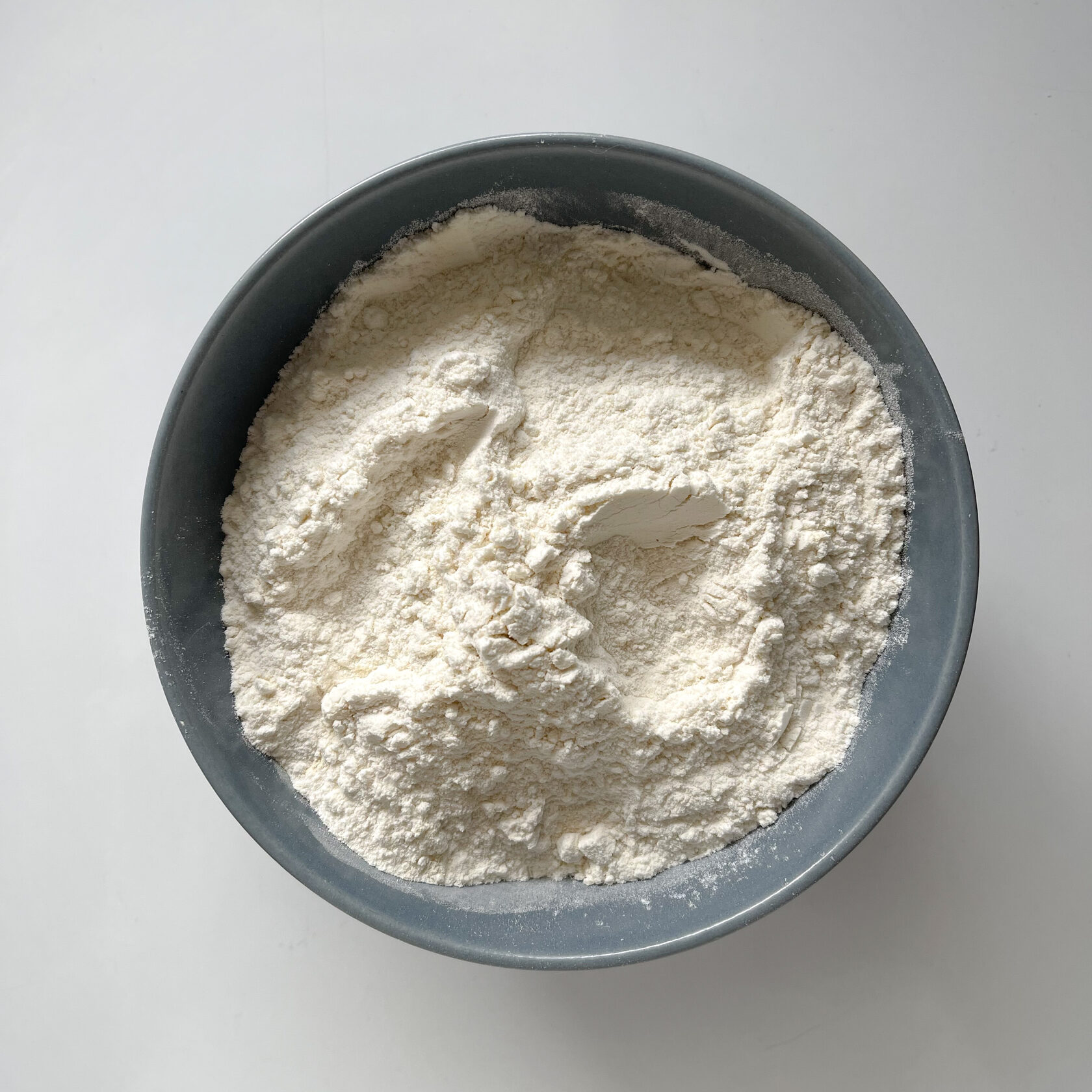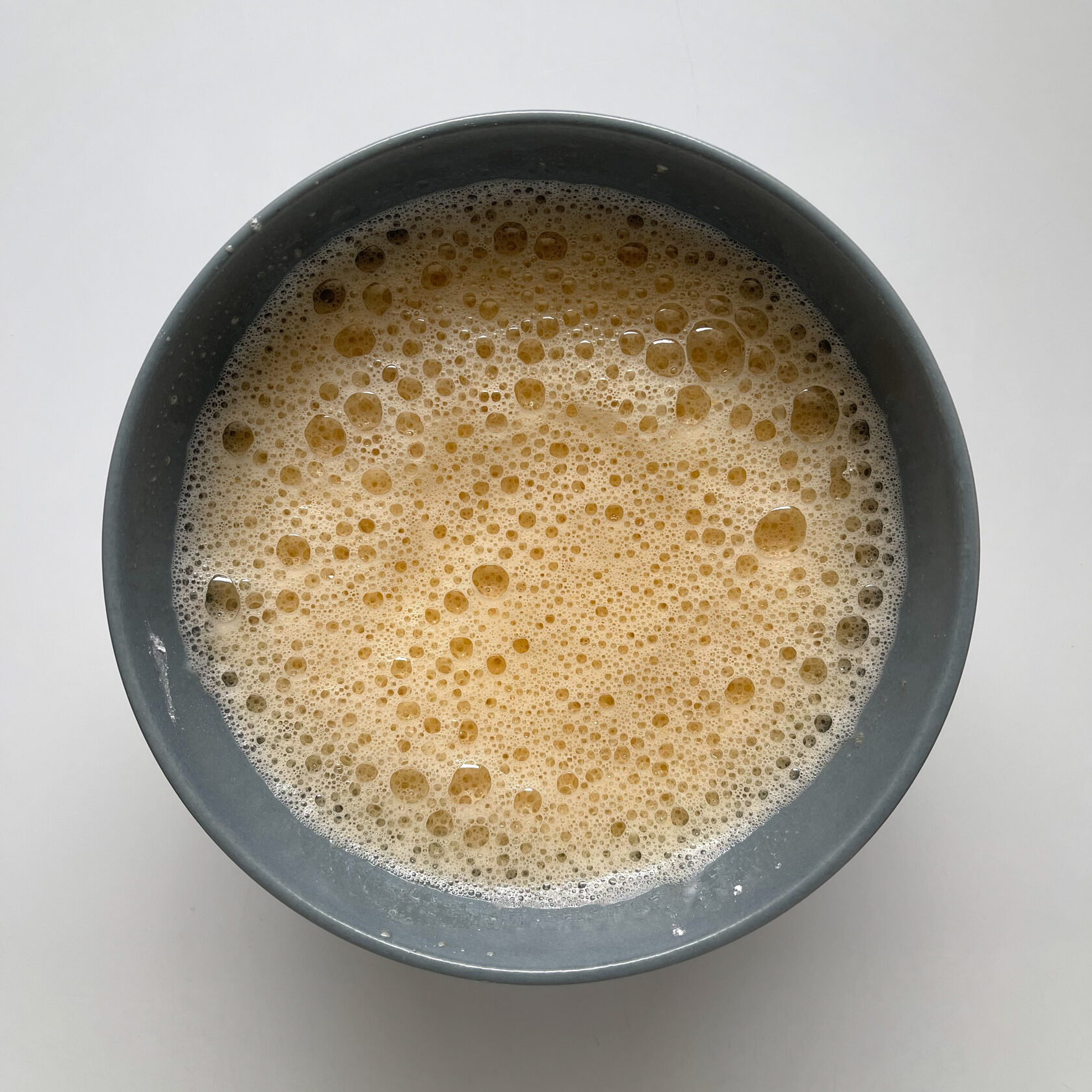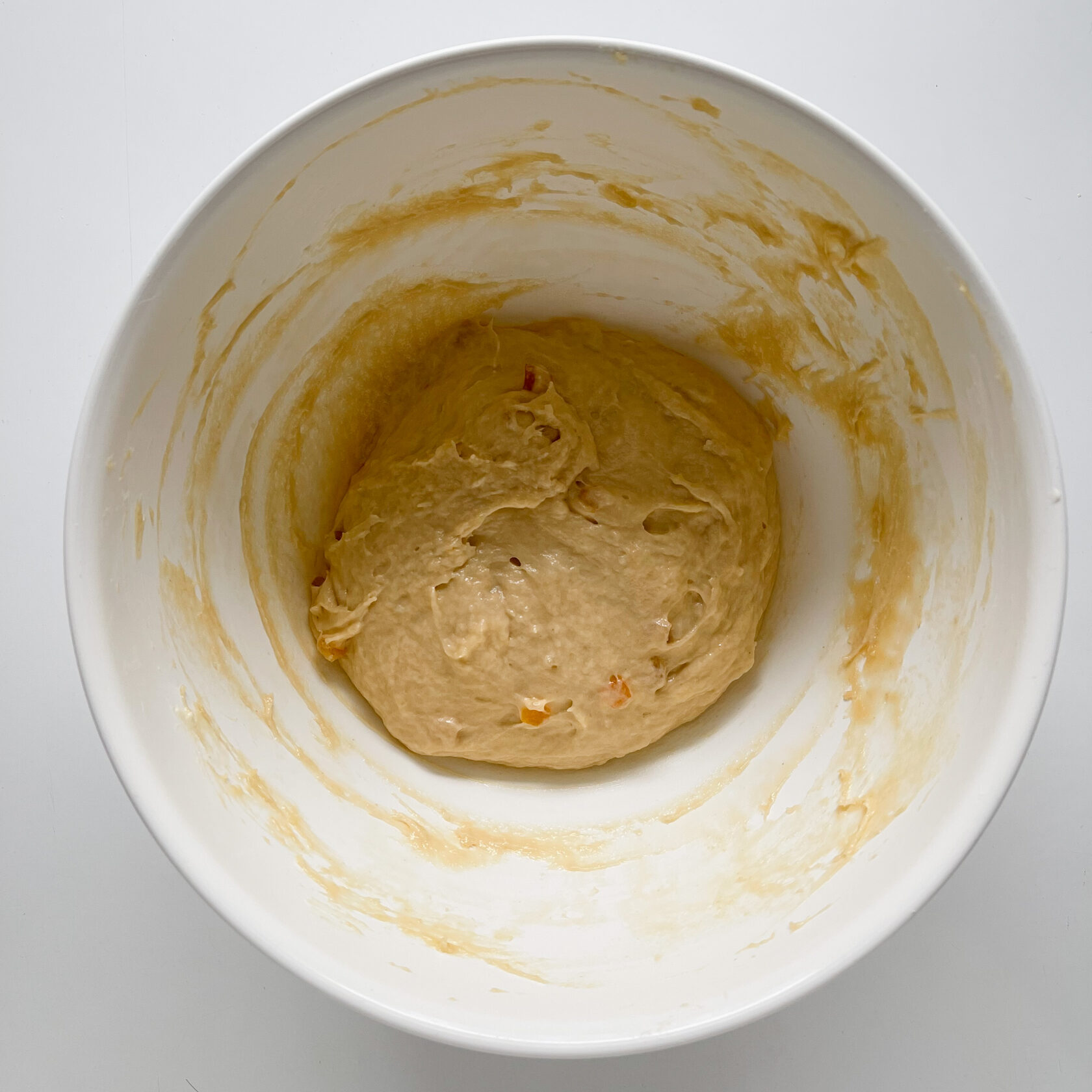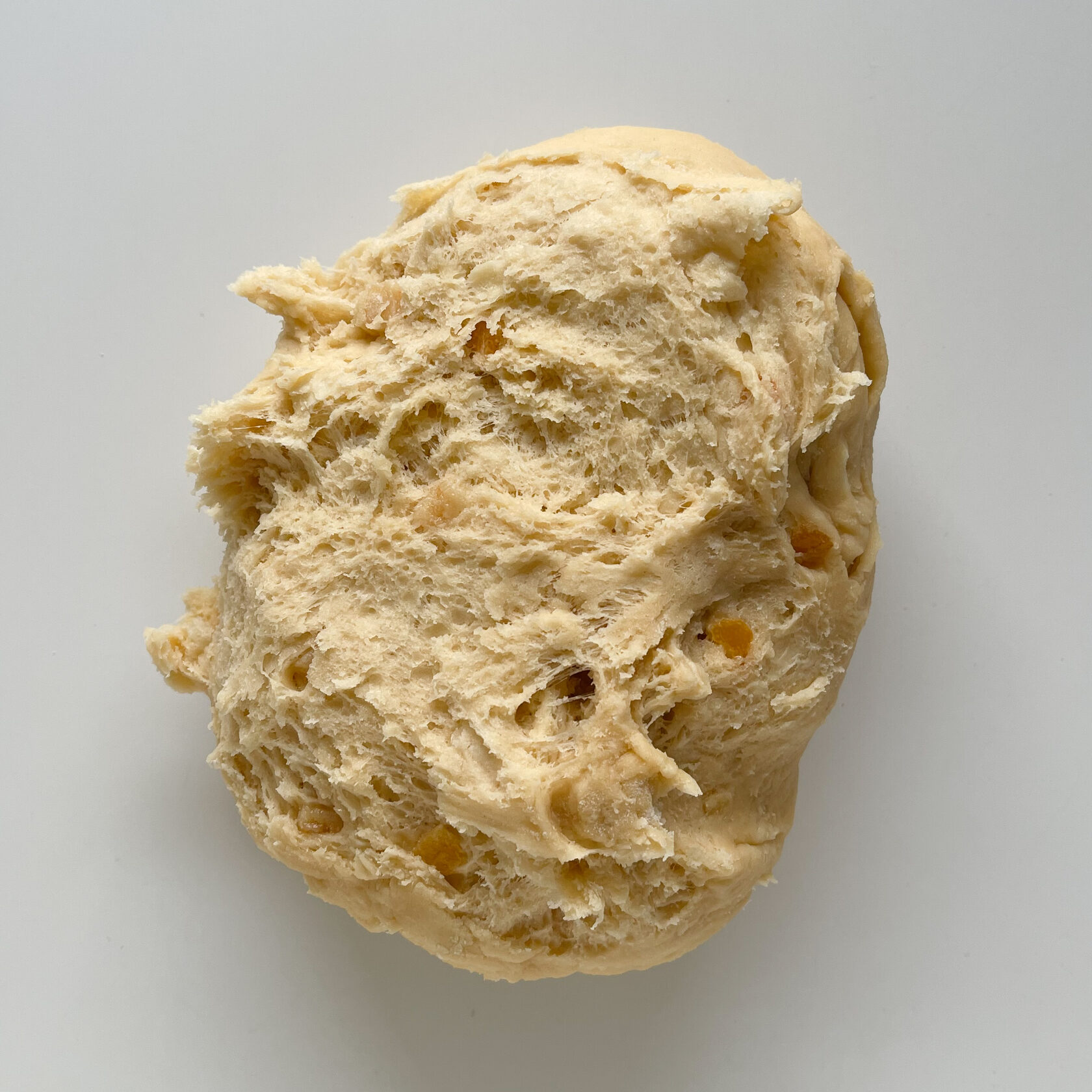Easter brioche cake
Classic recipe in Italian style
I was in Italy during the Christmas season, when the Italians offered me to eat some wonderful airy Easter cake every night after dinner. It was a huge fluffy cloud of soft dough called Pandoro. And I always agreed to eat this magical bun, even when I overeated at dinner. Simply because it was impossible to refuse.
When I made this brioche bun style Easter cake, I just teleported back to Italy.
Guys, just go ahead and make this kulich, it's beautiful, I vouch for it.
When I made this brioche bun style Easter cake, I just teleported back to Italy.
Guys, just go ahead and make this kulich, it's beautiful, I vouch for it.

Ingredients for 2 cakes:
250 g high strength wheat flour (12-14 g protein)
80 g white or brown crystallized sugar
3 medium eggs
40 ml of any milk
150 g butter
7 g dry quick yeast
3 g salt
50g dried fruit/dried berries/citrus citrus citrus
Vanilla as desired
250 g high strength wheat flour (12-14 g protein)
80 g white or brown crystallized sugar
3 medium eggs
40 ml of any milk
150 g butter
7 g dry quick yeast
3 g salt
50g dried fruit/dried berries/citrus citrus citrus
Vanilla as desired
To begin with, brioche is a sweet, creamy bun with a lot of butter. There are times when the amount of butter in a brioche is equal to the amount of wheat flour. But we will take only 60%.
We will introduce the butter in several steps and we will end up with a kind of hybrid of a yeast roll and a croissant. Now you understand how delicious it must be.
The hardest part about making such a kulich will be the wait. We will need a little more time than usual to proof the dough.
Otherwise, the process is as simple as possible.
We will introduce the butter in several steps and we will end up with a kind of hybrid of a yeast roll and a croissant. Now you understand how delicious it must be.
The hardest part about making such a kulich will be the wait. We will need a little more time than usual to proof the dough.
Otherwise, the process is as simple as possible.
Step 1:
Combine the wheat flour, salt and yeast and stir vigorously with a hand whisk.
We follow the choice of flour of high strength: on the package of flour will be written the content of proteins, fats and carbohydrates per 100 grams.
So the protein content should be about 12-14 grams.
The dough from such flour will rise and rise better.
Combine the wheat flour, salt and yeast and stir vigorously with a hand whisk.
We follow the choice of flour of high strength: on the package of flour will be written the content of proteins, fats and carbohydrates per 100 grams.
So the protein content should be about 12-14 grams.
The dough from such flour will rise and rise better.

Step 2:
Now combine the eggs, sugar and hot milk.
First beat the eggs and sugar a little until frothy, and then pour in the hot milk.
Hot, but not boiling, so that the eggs do not boil.
Now pour the liquid ingredients into the dry ingredients, add 1/2 of the room temperature softened butter and knead the dough.
It is convenient to do this in a stationary mixer with a hook attachment or in a bread machine.
Now combine the eggs, sugar and hot milk.
First beat the eggs and sugar a little until frothy, and then pour in the hot milk.
Hot, but not boiling, so that the eggs do not boil.
Now pour the liquid ingredients into the dry ingredients, add 1/2 of the room temperature softened butter and knead the dough.
It is convenient to do this in a stationary mixer with a hook attachment or in a bread machine.

Step 3:
It is just as convenient to knead the dough with a hand mixer with a spiral attachment or with your hands using a wooden spatula.
When the dough is kneaded, cover it with cling film and leave it in a warm place for several hours. The dough should increase in size several times.
When this has happened, add berries or dried fruit and knead the dough with your hands.
Put the container with the dough in the refrigerator for 2 hours.
It is just as convenient to knead the dough with a hand mixer with a spiral attachment or with your hands using a wooden spatula.
When the dough is kneaded, cover it with cling film and leave it in a warm place for several hours. The dough should increase in size several times.
When this has happened, add berries or dried fruit and knead the dough with your hands.
Put the container with the dough in the refrigerator for 2 hours.

Step 4:
After 2 hours, take out the dough and knead it again with our hands.
Now roll out the dough a little and randomly spread the second part of the soft butter on it.
Fold the dough 4-6 times and again leave it in the container under the cling film. There is no need to do this very carefully.
This time send the container to the refrigerator for 8 hours or overnight.
After 2 hours, take out the dough and knead it again with our hands.
Now roll out the dough a little and randomly spread the second part of the soft butter on it.
Fold the dough 4-6 times and again leave it in the container under the cling film. There is no need to do this very carefully.
This time send the container to the refrigerator for 8 hours or overnight.

The proofing of the dough in the cold is another distinctive feature of brioches.
So I suggest that you start making these cakes in the evening so that you can bake them the next morning.
After the yeast has done its work overnight, you can form the cakes.
We knead the dough with our hands, divide it into two parts and roll it into a ball.
When two balls have been formed, put them into paper cakes of about 10 centimeters in diameter.
Cover the forms with clingfilm and leave in a warm place for 1 hour, so the future cakes will rise before baking.
When the cakes have risen, brush the tops with melted butter and put them in the oven for 20-25 minutes, baking on medium level at 180 °C degrees until golden brown.
Remove the paper form from the finished cakes and cool completely at room temperature.
So I suggest that you start making these cakes in the evening so that you can bake them the next morning.
After the yeast has done its work overnight, you can form the cakes.
We knead the dough with our hands, divide it into two parts and roll it into a ball.
When two balls have been formed, put them into paper cakes of about 10 centimeters in diameter.
Cover the forms with clingfilm and leave in a warm place for 1 hour, so the future cakes will rise before baking.
When the cakes have risen, brush the tops with melted butter and put them in the oven for 20-25 minutes, baking on medium level at 180 °C degrees until golden brown.
Remove the paper form from the finished cakes and cool completely at room temperature.

Frosting:
You may not glaze the cakes at all, but simply sprinkle them with powdered sugar.
You can melt white chocolate and cover the cakes with it.
I took 1 egg white, added a drop of lemon juice, and whipped it with 2 tablespoons of powdered sugar until it was a smooth, shiny meringue.
The kulich itself turns out to be unsweetened, so a sweet topping would come in handy here.
The cakes can be stored with clingfilm in the refrigerator or even frozen.
But, I'm sure you'll eat them much sooner!
You may not glaze the cakes at all, but simply sprinkle them with powdered sugar.
You can melt white chocolate and cover the cakes with it.
I took 1 egg white, added a drop of lemon juice, and whipped it with 2 tablespoons of powdered sugar until it was a smooth, shiny meringue.
The kulich itself turns out to be unsweetened, so a sweet topping would come in handy here.
The cakes can be stored with clingfilm in the refrigerator or even frozen.
But, I'm sure you'll eat them much sooner!

